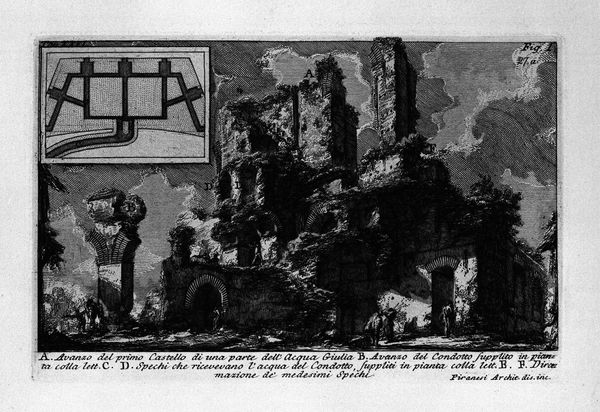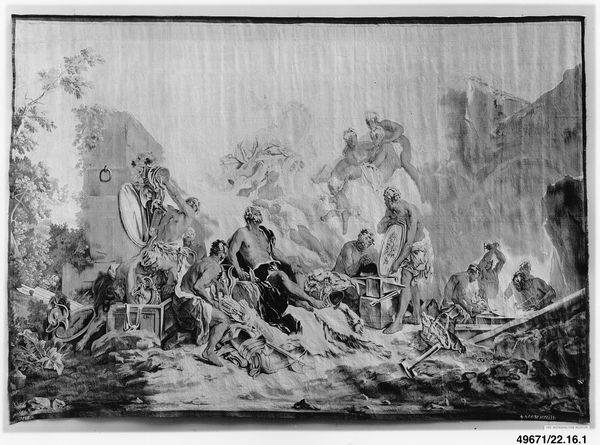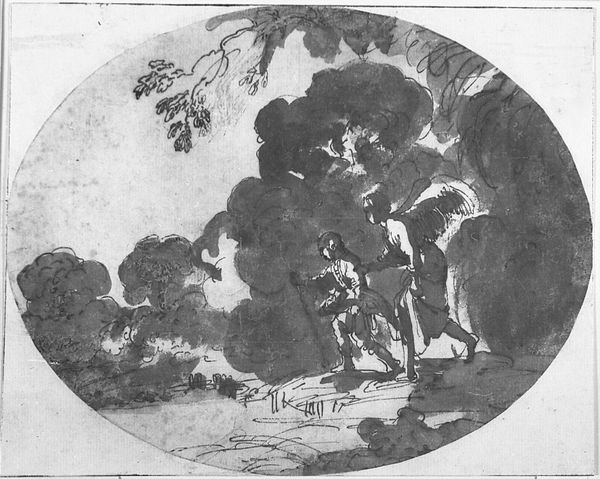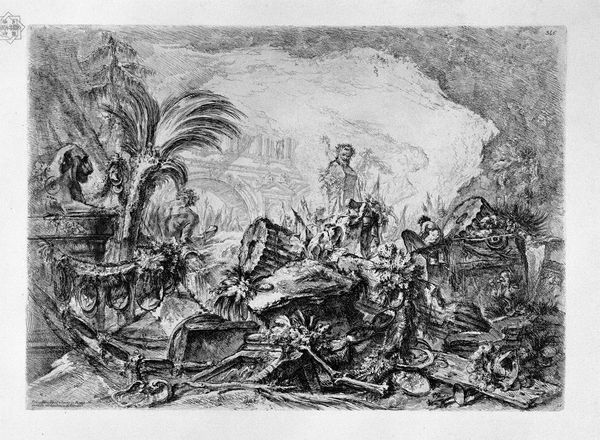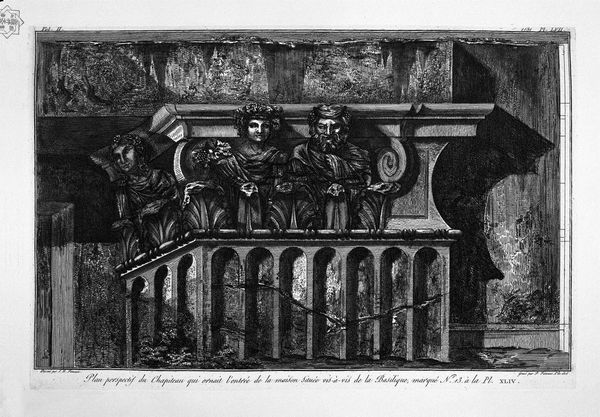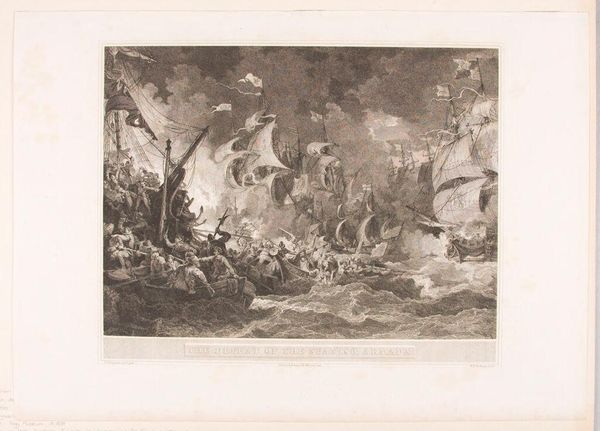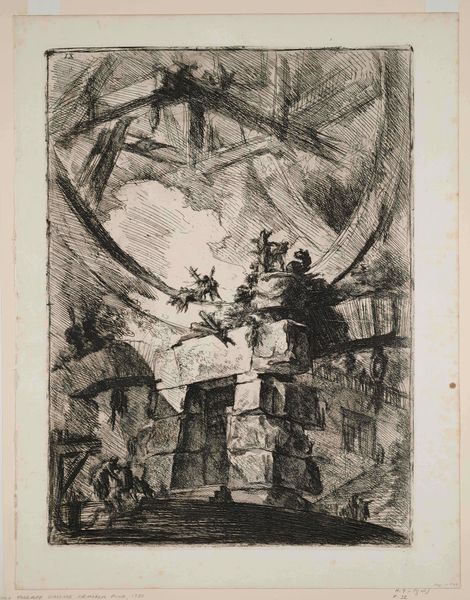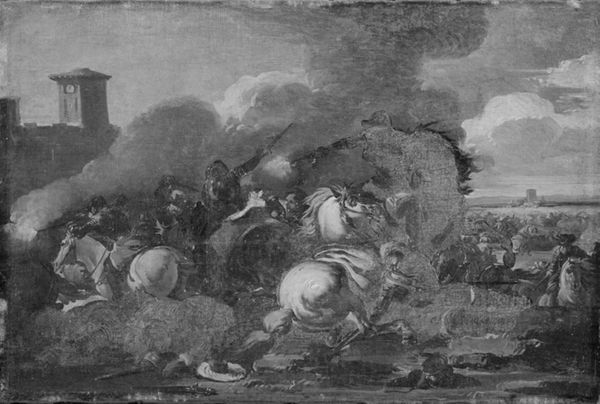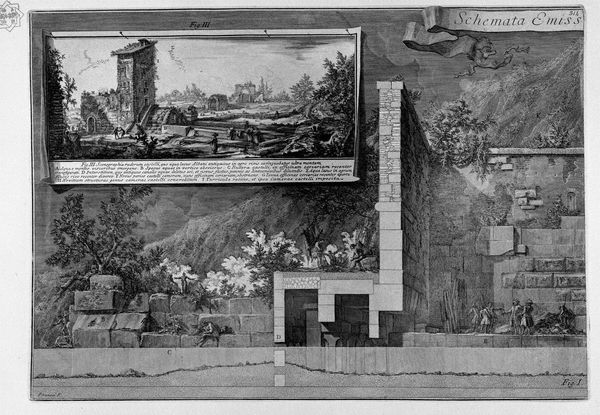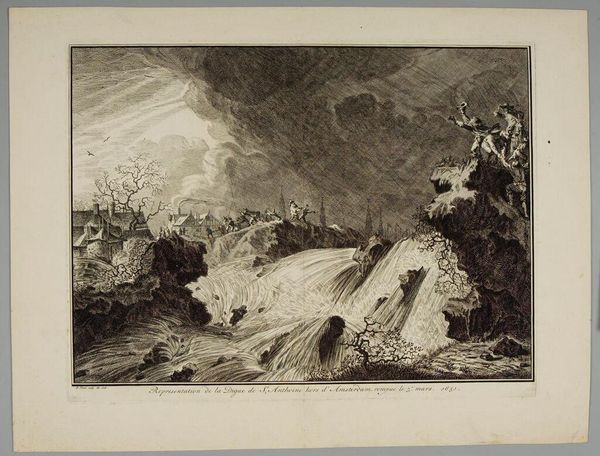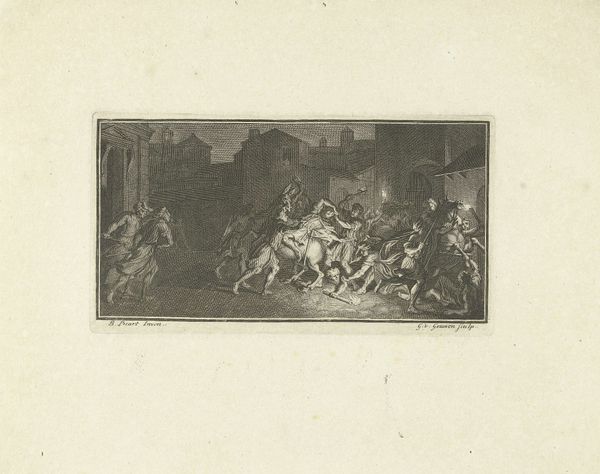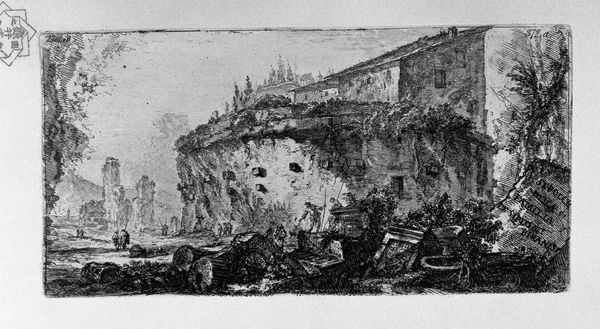
drawing, print, engraving, architecture
#
drawing
# print
#
landscape
#
form
#
romanesque
#
line
#
history-painting
#
engraving
#
architecture
Copyright: Public domain
Curator: This engraving is titled "Mausoleum of Santa Elena," by Giovanni Battista Piranesi. It depicts a grand, almost fantastical view of a historical structure. Editor: My first impression is that it's brooding, theatrical. The strong contrast and dense crosshatching create this feeling of imposing weight, both literally and figuratively. The figures look minuscule. Curator: Piranesi was, of course, fascinated with Roman antiquity, and frequently combined observation with dramatic invention in his depictions of it. Santa Elena, mother of Constantine, holds significant cultural and religious weight; what might Piranesi be hinting at with such an overwhelming portrayal? Editor: That is an interesting point, the visual drama feels deliberate, highlighting the monument's symbolic power and, perhaps, interrogating its cultural function as a site of memory and veneration. Considering the figures in the foreground, so diminished in comparison, what is Piranesi trying to communicate about individual agency versus historical forces? Curator: The tomb of Helena is certainly visually impressive, monumental even; in Piranesi’s rendering, the form itself takes precedence, looming as this impenetrable, timeless block, dominating everything around it. Does this exaggeration alter the narratives and lessons it embodies? Editor: Definitely. The piece makes me consider issues of power and representation inherent in architectural legacies. Helena's role as the mother of Constantine and her influence in the early Church make this structure fraught with intersections of gender, religion, and imperial power. Piranesi seems to amplify this complexity by contrasting naturalistic depiction and emotional scale. Curator: A visual rhetoric of overwhelming form! Yet that cross-hatching lends it also a sense of ephemerality; as if such structures of history are at once lasting and constantly eroding. The mausoleum is shown nestled into the landscape like a ruin even. Editor: Precisely! I’m now drawn to the textural details and this stark contrast, reinforcing that dynamic tension. Thank you; now I see this print through a very different lens! Curator: Yes, the dialogue enlivens our consideration too, revealing a layered and complex history within what seems a simple architectural print!
Comments
No comments
Be the first to comment and join the conversation on the ultimate creative platform.
